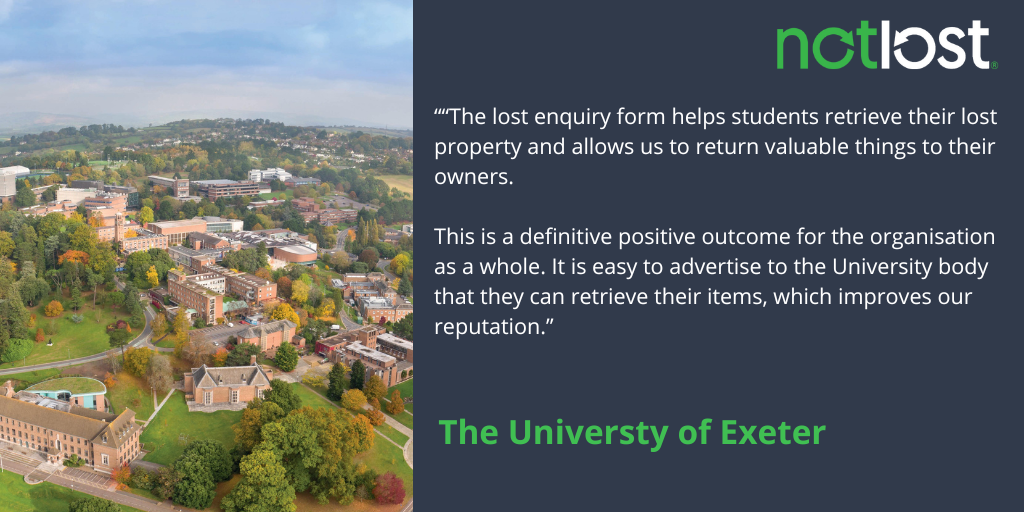Earlier this year, several reports highlighted the UK’s university funding crisis. Driven by rising costs and a sharp decline in international students, higher education is grappling with an issue which has been bubbling away for some time.
When money’s short, the natural reaction might be to tighten the purse strings. However, while some decisions may be necessary, others can negatively impact the bottom line in unforeseen ways.
In this article, NotLost will explore the causes behind the current crisis, its impact, and how an efficient lost property system is crucial for driving operational efficiency at universities — especially during lean years.

Causes behind the current university funding crisis
Considering annual fees top out at £9,535, it may be difficult to understand how universities are strapped for cash. As with all things, a little digging reveals all.
Drop in international students
During the 2022/2023 academic year, roughly one-fifth of university funding came from overseas students. For some specialist institutions, such as the Royal College of Art and the University of the Arts London, this figure was over 50%.
Reliance on foreign students puts universities in a precarious position — fully realised last year, when increased visa costs, restrictions on overseas students bringing family to the UK, and greater competition from other countries caused a 16% year-on-year decline in international applications between January and July 2024. As a result, the UK’s international student population dropped for first time in a decade.

Energy costs
It’s no secret that rising costs are stinging businesses. Exacerbated by the COVID-19 pandemic and Russia’s invasion of Ukraine, energy prices are arguably the most keenly felt hike.
Higher energy bills are especially challenging for higher education, as campuses, which are often the size of small towns, require heat, air conditioning, and power for extended periods.
One example of the struggle was laid bare by Bristol UWE, whose bill rose from £6.5m to £10.5m between 2021-2022 and 2022-2023, and predicted a further £11m increase in 2023-2024.
National insurance
More recently, the Labour government chose to increase employer NICS contributions from 13.8% to 15%. The decision is set to cost higher education around £470m in the 2025-26 academic year.
While a slight increase in the tuition fee cap will recoup some of this (more on that later), the result is still a significant financial shortfall.

So, what does the university funding crisis mean?
Aside from the painfully obvious—less money spells trouble—universities are in a particularly precarious position to absorb rising costs. Most funding comes from domestic tuition fees, which are currently capped at £9,250 annually and will increase by £280 for the 2025-2026 academic year.
So, unlike other businesses, they can’t pass rising costs on to consumers (students).
While there are important reasons for this, it leaves universities exposed. And, with overseas student income decreasing, there is a genuine concern that 40% of higher education institutions will be in deficit by the end of the year.
Can NotLost Help?
We won’t pretend that lost property software can save a university from financial challenges. However, when money is tight, getting the most out of your employees and increasing staff satisfaction is essential.
An efficient lost and found process can play a key role in this.
Making the most of staff time
University security teams are responsible for thousands, if not tens of thousands of people daily. The sheer number of individuals, combined with the fact that they are constantly moving around campus, attending lessons, getting food, studying, etc., creates a perfect environment for misplaced possessions. In fact, it is estimated that around 4.5 million items are lost at universities every year.
Without the right tools, managing this can be choppy. We discovered this firsthand when speaking with UCL staff, who were drowning in an ocean of misplaced possessions.
Introducing our tried-and-tested platform significantly reduced time spent managing lost and found, enabling them to focus on more critical aspects of their roles.
%
UCL staff time saved managing lost property
Improving staff morale
Undertaking thankless tasks (with lost property unfortunately falling into this category) outside of one’s remit does little for job satisfaction. The manual processes staff suffer are laborious, which, alongside managing frantic students desperately trying to recover their laptops, can create a stressful situation.
Unsurprisingly, disgruntled staff perform less well and are more likely to take time off. Even more damaging is losing employees, as hiring and training replacements generally costs 20% of the annual salary – an unwanted expense at the best of times.

Student satisfaction & university reputation
Many factors mark a student’s time at university. One is the experience provided outside of the education itself. This could be facilities on campus, extra-curricular support and, of course, ensuring a lost item is returned efficiently.
When we consider the five most commonly lost items on campus over the past 12 months, the importance of repatriating them becomes starkly apparent.
Headphones |
1954 |
Jewellery |
1751 |
ID |
1456 |
Charger |
1239 |
Jacket |
870 |
The first four—headphones, jewellery, ID, and chargers—are expensive or highly inconvenient to replace. An institution that doesn’t make every effort to return essential items could be accused of not taking student welfare seriously.
On the other hand, the speedy return of critical possessions garners goodwill. With finances less abundant than before, small wins can help cultivate a positive reputation and generate click-friendly PR stories from an unlikely source (lost property).

Let NotLost Help
We support eight leading universities (below) to streamline their lost property process. Security teams using NotLost can easily log items via our image recognition software, with our self-service portal and matching engine ensuring student enquiries are automatically paired with found items and returned to their owners.
The result? A process that works like clockwork and boosts operational efficiency while maximising both student and staff experience.

